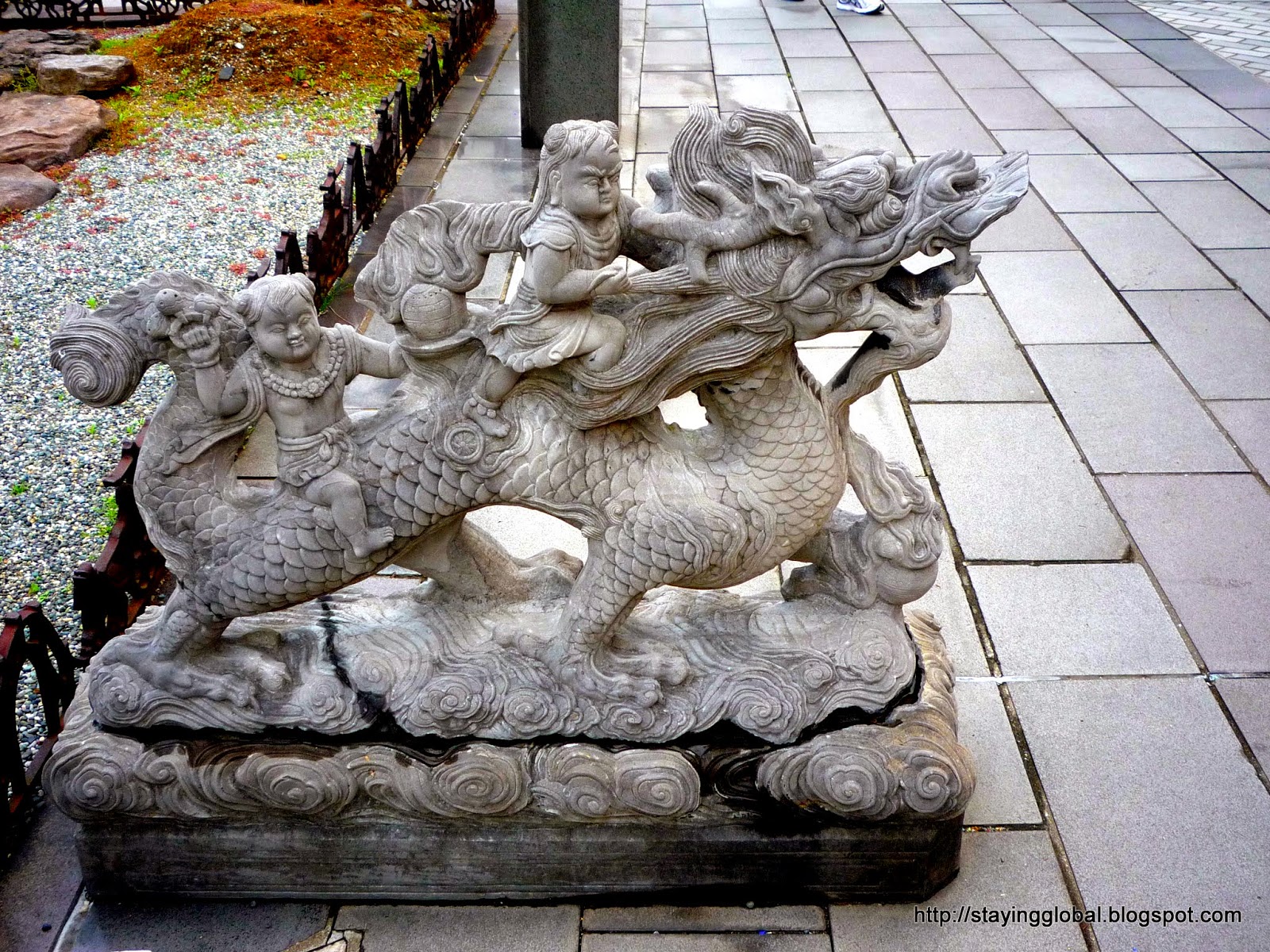Nagasaki had trade relations with China since the 16th century. Traders and merchants settled down in Nagasaki and established Japan's oldest Chinatown, the Shinchi Chukagai. During Japan's Edo period policy of isolation, the Chinese and Dutch were the only foreigners allowed to remain in Nagasaki, confined within Shinchi Chukagai and Dejima. When Japan opened up to the world in the Meiji era, Nagasaki's port was among the first ports to be opened up and foreign trade resumed bringing in more merchants.
The Chinese community in Nagasaki, with the support of the Chinese Government (the Qing Dynasty) constructed the Koshibyo, the Confucius Shrine in 1893. This colorful shrine is said to be the only Confucius Shrine built by the Chinese outside China.
Even today the land on which the Shrine stands is technically Chinese territory and land rights are controlled by the Chinese Embassy in Tokyo.
Confucius, the founder of Confucianism is enshrined in the Shrine.
The Shrine with its bright colours and sculptures makes a pretty sight.
72 Statues of representing Confucius disciples stand on the shrine ground.
The Shrine suffered severe damage during the Atomic Bombing of Nagasaki on August 9, 1945. The restoration was completed only in September 1967 when it was reopened to public. Further renovations were carried out in 1982.
The Museum of Chinese History and Palace Museum is located right behind the Confucius Shrine and many of the displayed artifacts and relics are from the Chinese National Museum and Palace Museum in Beijing.
A gift shop selling Chinese souvenirs and handicrafts is located below the museum.
Opening Hours: 8:30-17:00 hrs.
Entrance: 600 yen
Access: Short walk from the Ouratenshido-shita Stop on the Nagasaki Street Car route number 5)
The Chinese community in Nagasaki, with the support of the Chinese Government (the Qing Dynasty) constructed the Koshibyo, the Confucius Shrine in 1893. This colorful shrine is said to be the only Confucius Shrine built by the Chinese outside China.
Even today the land on which the Shrine stands is technically Chinese territory and land rights are controlled by the Chinese Embassy in Tokyo.
Confucius, the founder of Confucianism is enshrined in the Shrine.
The Shrine with its bright colours and sculptures makes a pretty sight.
72 Statues of representing Confucius disciples stand on the shrine ground.
The Shrine suffered severe damage during the Atomic Bombing of Nagasaki on August 9, 1945. The restoration was completed only in September 1967 when it was reopened to public. Further renovations were carried out in 1982.
The Museum of Chinese History and Palace Museum is located right behind the Confucius Shrine and many of the displayed artifacts and relics are from the Chinese National Museum and Palace Museum in Beijing.
A gift shop selling Chinese souvenirs and handicrafts is located below the museum.
Opening Hours: 8:30-17:00 hrs.
Entrance: 600 yen
Access: Short walk from the Ouratenshido-shita Stop on the Nagasaki Street Car route number 5)


























No comments:
Post a Comment